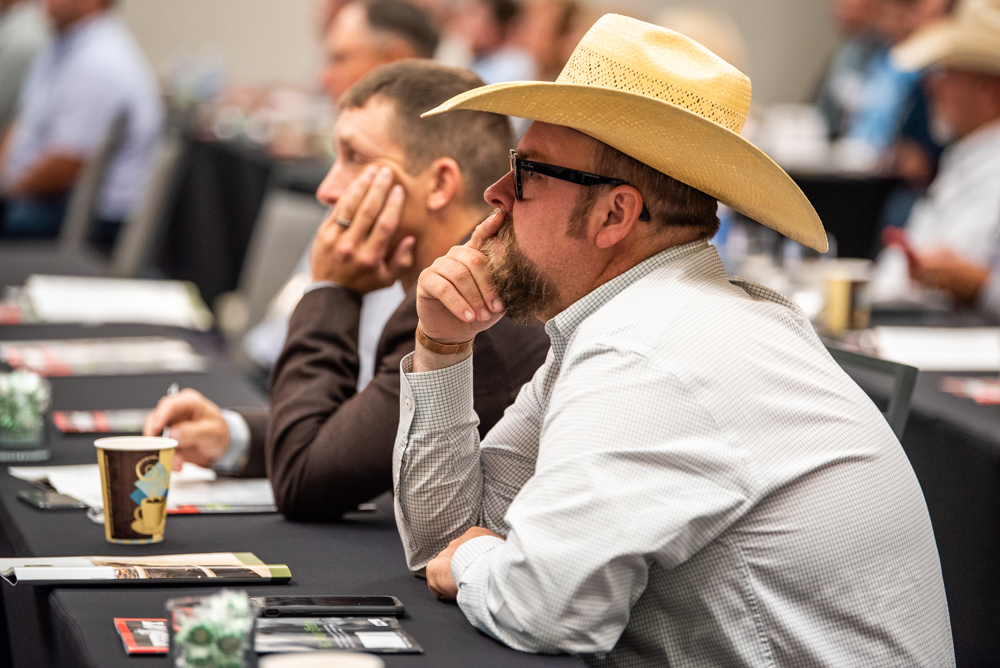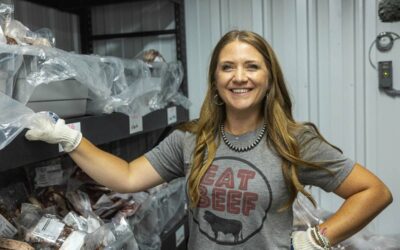
A rare opportunity
The need for unification on a disease traceability program
by Abbie Burnett
November 1, 2019
It’s been 16 years since the “cow that stole Christmas” shut down exports from North America and cost the beef industry an estimated $9 billion. Those were the days when terrorists also threatened to infect U.S. herds with anthrax.
All these years later and still no national traceability program? Four Sixes Ranch manager Joe Leathers let some exasperation show while addressing the Feeding Quality Forum in Amarillo this summer.
“How can we afford not to have a disease traceability program as an insurance policy?” he asked. “Are we going to have another disease outbreak? Yeah. That’s realistic.”
Leathers put traceability to the test during the 2011 drought when he secured leases for nine ranches in five states north and west of his base in Guthrie, Texas. Moving up to 5,000 cows across state lines meant reading metal clips and culling. It took four summer-dawn roundups that had to end by mid-morning to avoid greater heat and stress.
“I figured out real quick, this is not efficient,” he recalled. “It’s not good on the cattle. It’s not good on your labor.”
That’s when the Four Sixes team began using electronic identification (EID) tags that permitted collecting and loading the cattle in a single day. Tag numbers downloaded to a computer, he printed and delivered them to the vet barn, where interstate shipping papers were soon in hand.
Use of those tags has become a management tool that easily pays its way, with implications for all who ask for incentives, he added.

Rather than scan each animal down an alley chute, the UHF tag reader records individual cattle by group. Leathers can call up details on any cow from his phone, including location, breeding and vaccination history.
He can see her calves’ data or whole pens of feedyard and carcass grading performance, and generate reports for potential buyers. Finding a sire group that made 35% Prime, he adjusted sire selection to create more of the best to highlight in those reports.
“Then I ask for a price substantially higher than what the market is,” he told cattlemen. “You know what? I nearly always get what I ask for.”
U.S.-produced beef sets the world standard for quality, and the industry makes use of production technology. But when it comes to using those tools for traceability? “We use very little,” Leathers said.
The biggest obstacle he sees is a lack of standardization. UHF readers don’t read all UHF tags the same way, and data storage options are varied but lack user choice as to national, state or third-party group.
“We’ve got to keep the flexibility as individual producers to make our own decisions,” he said, noting a need for common-sense regulations that work for every size operation “at the speed of commerce.”
Leathers said even if traceability technology didn’t happen to pay its own way up front, there’s no room for debate.
“The consumer wants it. End of discussion,” he said. “Whether their concerns or their desires are realistic, it makes zero difference.”
More and more consumers simply want to know more about their food.
“Who is responsible for giving them what they want and need so that we can sell our product for a higher price? We are. Yet our industry is segmented in arguing and bickering,” Leathers noted.

Rather than take the reins in proactive leadership, Leathers said most industry organizations are merely reactive, from politics to foreign trade.
“If we don’t do anything, we lose our competitive advantage in the world with foreign trade,” he said. Leading means moving past a simple, “this won’t work.”
It also means getting past the October announcement that USDA has paused program development. That doesn’t mean the issues will go away, but it could mean more time for producer input.
“There is going to be a disease traceability program in our future in the United States. So get over it. It’s either going to be mandated or it’s going to be something designed by producers and the industry,” Leathers said.
The 12-member Producer Traceability Council he co-chairs shared a few consensus points in May, but it’s still an open discussion.
Web information searches can find ways to join that conversation, and Leathers especially invites participation from all who can bring a positive and “common-sense approach… start it as an insurance policy and then let’s work as an industry to make us money.”
you may also like
Everything They Have
Progress is a necessity on the Guide Rock, Nebraska, ranch where Troy Anderson manages a commercial Angus herd, small grower yard, his 10-year-old son, and a testing environment. Troy’s approach includes respect for his livestock, people and land. For that, Anderson Cattle was honored with the CAB 2023 Commercial Commitment to Excellence Award.
Future Focused Business
Pilot partners in CAB’s Ranch to Table program, these North Dakota ranch families took some of the market volatility into their own hands in April 2022. Their leap of faith provides high-quality beef options for their communities and diversifies their income. Now they sell their finished cattle, as well as those of their customers, through Dakota Angus, a direct-to-consumer beef business.
Building Bonds
A dozen members of the Meijer communications team arrived to experience, first hand, how the beef they sell in their stores is raised. They touched and felt and tasted and smelled every aspect of the cattle business from the delicious flavor of Certified Angus Beef ® ribeyes to the slippery sensation of you-know-what on their shoes. Questions of every nature were asked and answered by true cattlemen and champions for CAB, Bruce, Scott and Andrew Foster.



